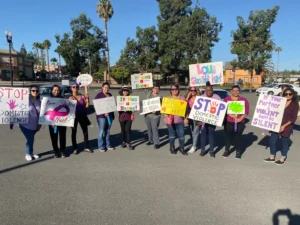Homelessness is a traumatic and deeply impacting experience for anyone, but it can leave major scars in children’s lives. Unfortunately, childhood homelessness is all too common, both on a national scale and here in California. Recent statistics show that:
-
Approximately 2.5 million children are homeless annually in the United States.
-
One in every 30 American children goes to sleep without a home of his or her own each year.
-
One in every 20 children in California do not have a home.
-
California ranks 48 out of 50 in extent of youth homelessness.
Given these numbers, it’s crucial that we examine the effects that homelessness has on these children, in the short and long term. Here’s a closer look at the impact of homelessness on children’s health and well-being.
How Homelessness Impacts Children’s Short-Term Health
Living without a stable home can have an immediate impact on children’s health. Children experiencing homelessness are more likely to suffer from acute health problems. The National Child Traumatic Stress Network reports that “homeless children are sick at twice the rate of other children. They suffer twice as many ear infections, have four times the rate of asthma, and have five times more diarrhea and stomach problems.” This stems from the lack of a clean, warm, safe environment — often coupled with inadequate nutrition.
Many homeless children are also at risk of exposure to violence, substance abuse, and other forms of trauma, leading to a higher prevalence of mental health issues such as depression and anxiety.
How Homelessness Impacts Children’s Long-Term Health
Homelessness during childhood can also lead to significant long-term health issues. Continuous exposure to stressful situations can trigger chronic stress response, adversely affecting child development and causing long-term mental health issues. Moreover, children experiencing homelessness have a higher chance of encountering health problems as adults, including chronic conditions like heart disease and diabetes.
These health concerns are amplified by difficulties in accessing quality healthcare due to a lack of stable housing or insurance. Missed vaccinations, delayed developmental screenings, and irregular check-ups often accompany child homelessness, leading to poor overall health outcomes.
The Impact of Homelessness on Children’s Well-Being and Development
Homelessness can also severely impact child development and academic success. Children experiencing homelessness often face numerous obstacles to their education, including irregular school attendance, lack of quiet spaces for doing homework, and moving often, which can lead to changing schools frequently. These challenges result in lower academic performance and reduced school engagement.
Homelessness during early childhood — a critical period of brain development — can have particularly devastating effects. Research indicates that “50% of homeless children under the age of four have developmental delays, a rate three-to-four times greater than that of children who do not experience homelessness.”
How to Support Children Experiencing Homelessness
Supporting children experiencing homelessness requires a multi-pronged approach, encompassing immediate intervention and long-term strategies to provide a nurturing environment for their growth and development. Here are some ways you can support and advocate for unhoused children:
-
Immediate basic needs: Firstly, providing essential and immediate needs such as food, shelter, and clothing is crucial. Organizations like Crisis House work hard to make these resources available to those in need. Help us provide these critical services to East County, San Diego by volunteering or donating today.
-
Access to education: Ensuring homeless children have stable access to education is vital. Initiatives like tutoring programs, school supply donations, and transportation assistance can help keep these children in school, offering a semblance of normalcy and stability.
-
Healthcare services: Facilitating access to health services — especially mental health support — is key. Partnering with local health clinics or nonprofit organizations can provide necessary medical care and counseling services.
-
Policy advocacy: Advocate for policies that address the root causes of homelessness, like affordable housing and living wages. Joining local advocacy groups can amplify your voice on behalf of those who are underserved.
-
Raise awareness: Educate your community about childhood homelessness to help dispel misconceptions and promote empathy and understanding.
While these actions won’t solve homelessness overnight, they can provide vital support for children in this difficult situation. A concerted effort from governments, organizations, and communities is needed to ensure that every child has a stable home — a fundamental stepping stone for their future health, success, and life satisfaction.
At Crisis House, we are here during these stressful times to support families with our services and resources. We’re leaders in critical services in East County, San Diego, providing crisis intervention, transitional and permanent housing, and services for families and children fleeing domestic violence.
Help us reach those in need by donating or volunteering today! You can also sign up for our newsletter to stay in the loop as we work to connect families, children, and individuals to crucial resources. Together, we can empower people to renew their lives!







